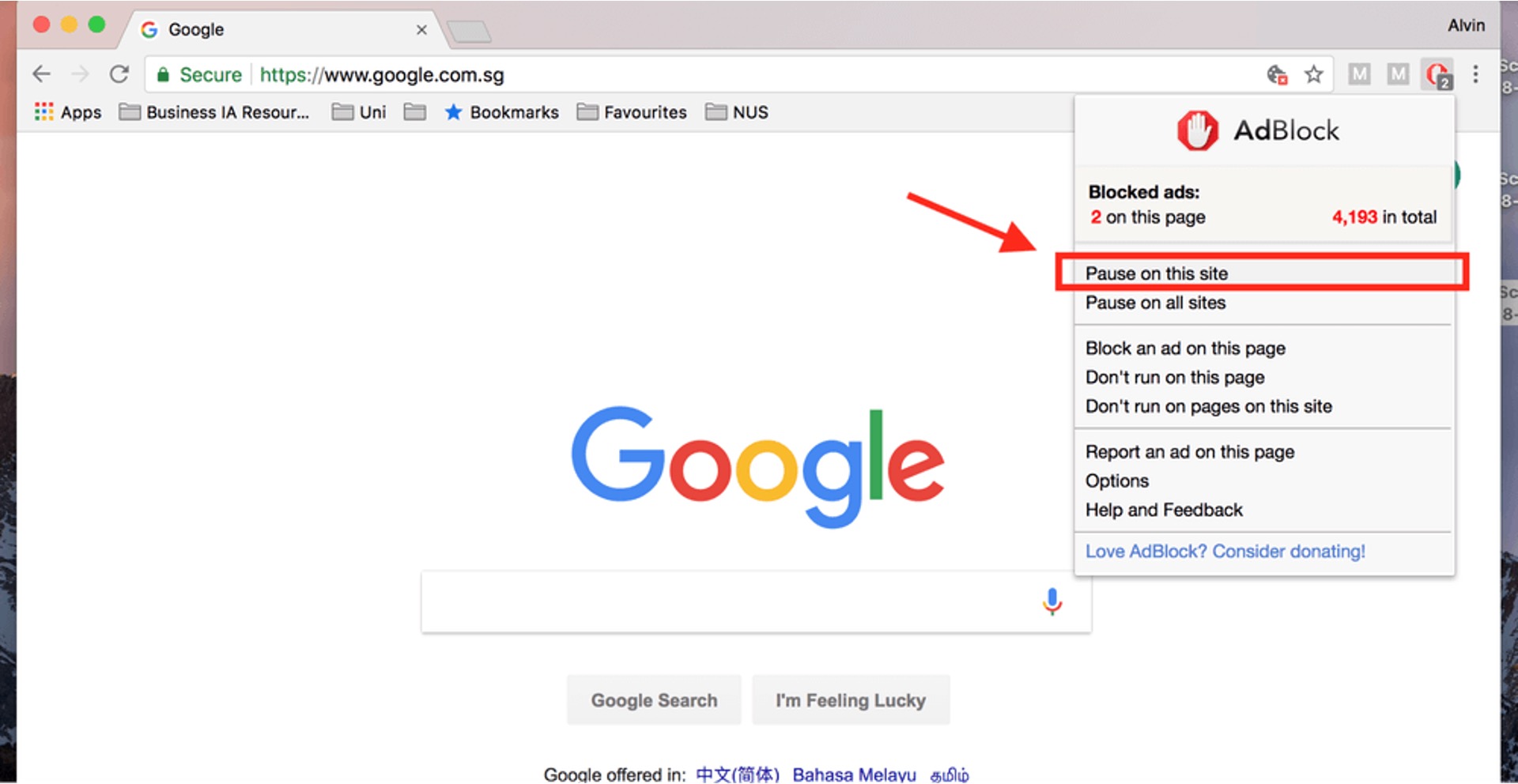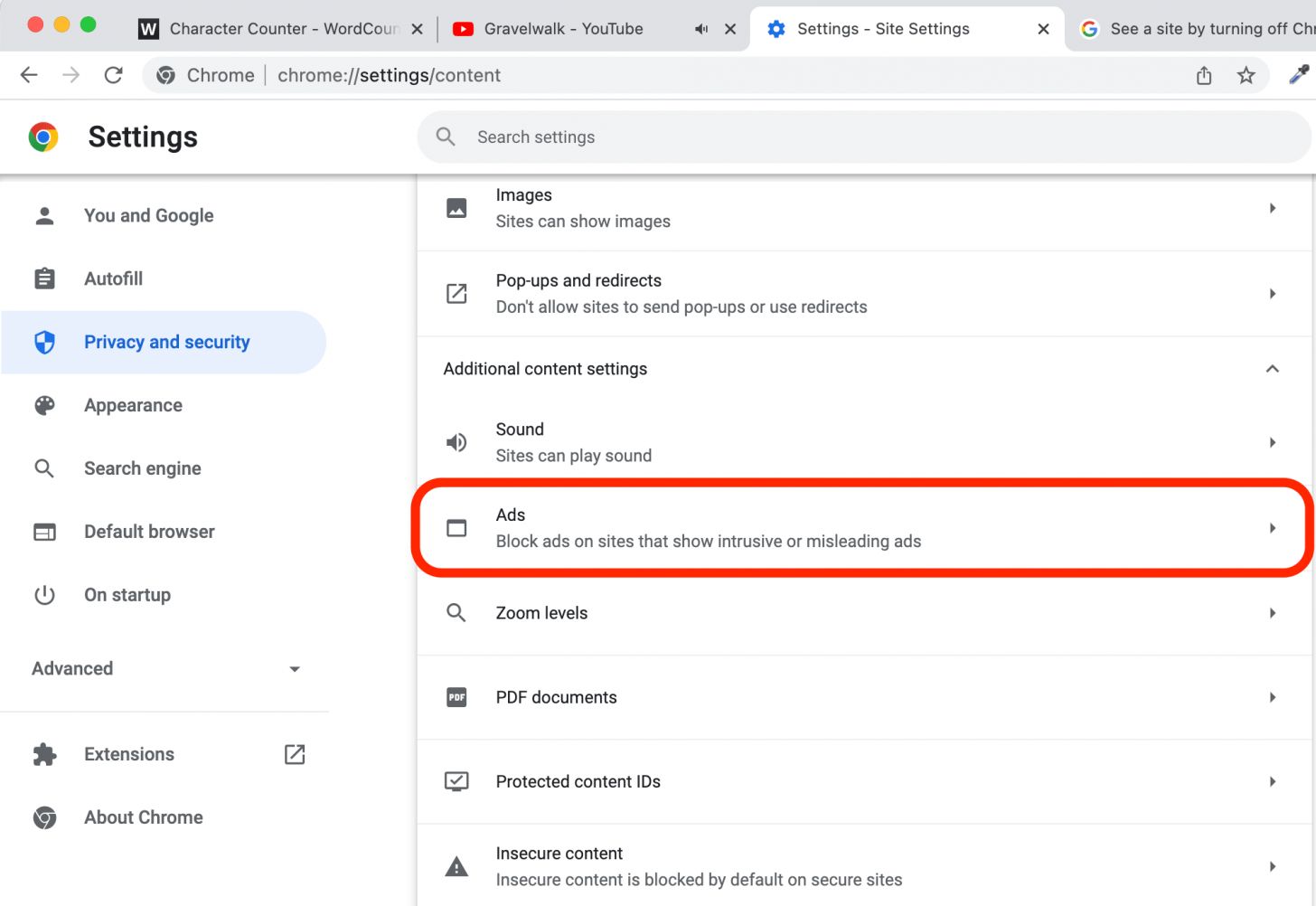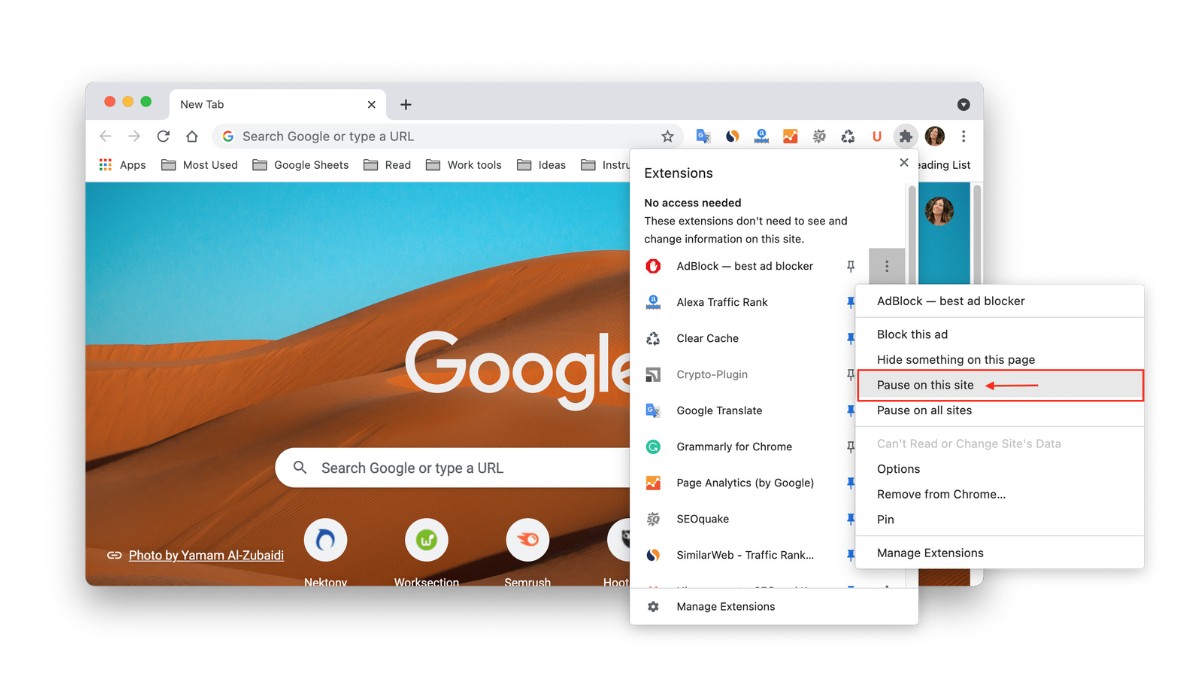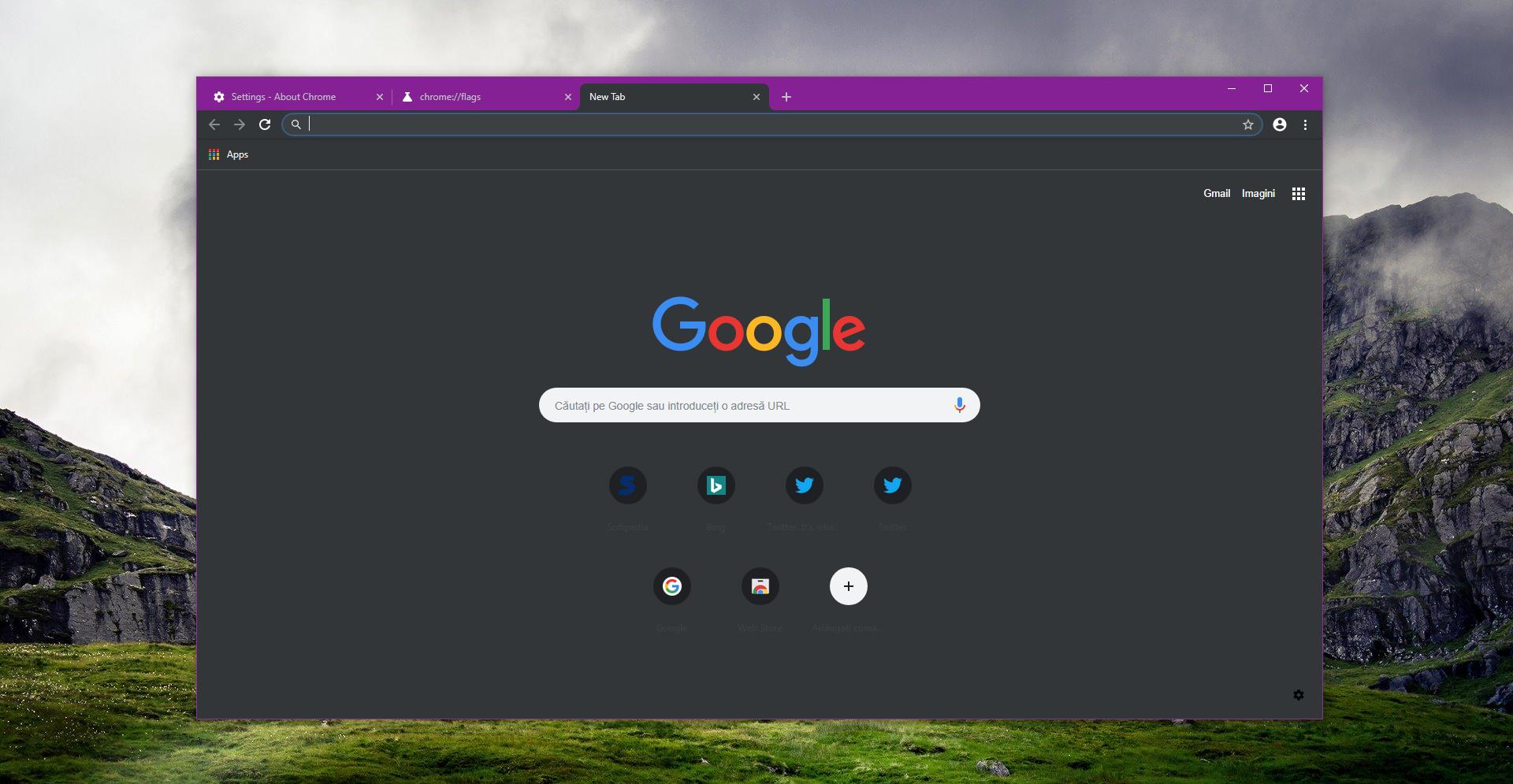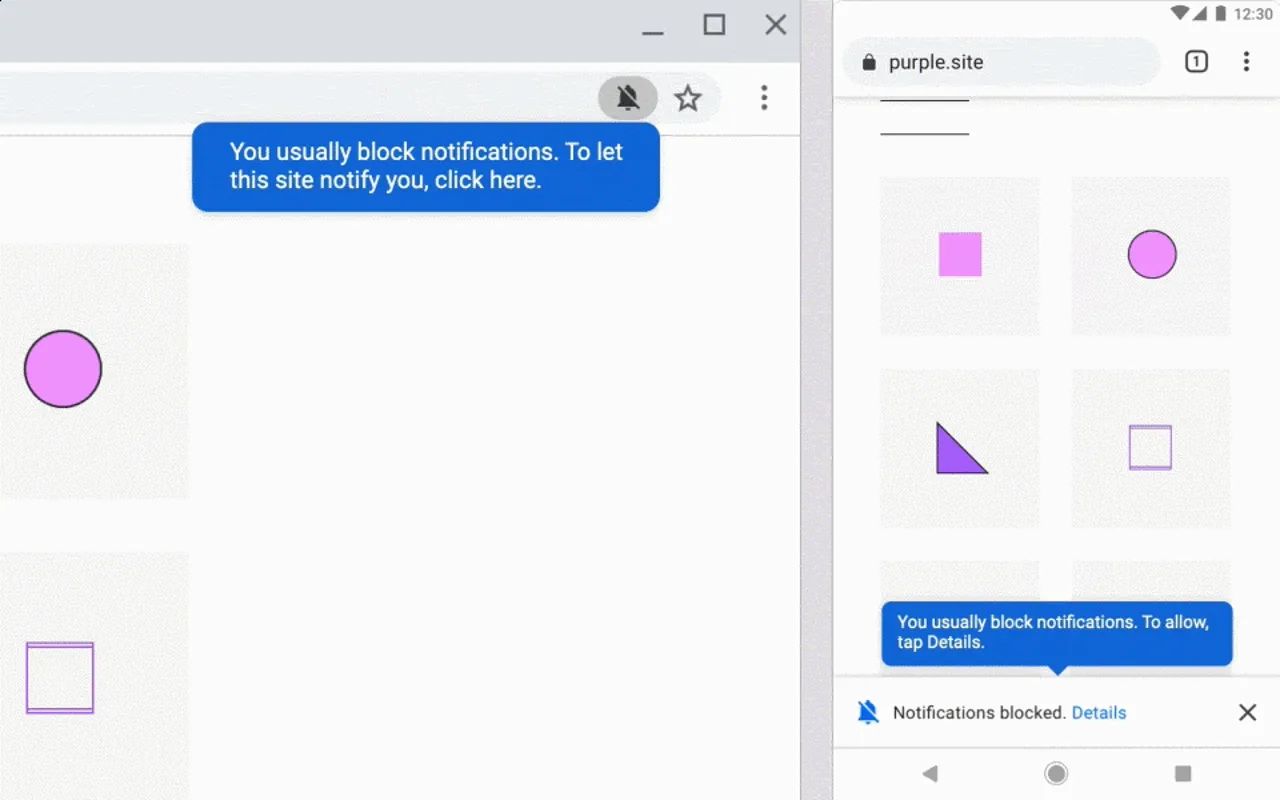Introduction
In today's digital age, web browsers have become an integral part of our daily lives, serving as gateways to a vast online world. Among the plethora of browsers available, Google Chrome stands out as a popular choice, offering a user-friendly interface and a wide array of extensions to enhance the browsing experience. One such extension that has gained widespread use is the ad blocker, designed to minimize intrusive advertisements and create a more streamlined browsing environment.
While ad blockers can significantly improve the online experience by reducing clutter and distractions, there are instances where users may need to disable them. Whether it's to support a favorite website, access specific content, or troubleshoot browsing issues, knowing how to temporarily or permanently disable the ad blocker in Chrome can be invaluable.
In this article, we will explore various methods to disable ad blockers on Chrome, providing step-by-step guidance to cater to different user needs. From disabling ad blockers for specific websites to managing ad blocker extensions and whitelisting favored sites, we will delve into practical solutions that empower users to customize their browsing experience.
As we navigate through the methods, it's important to note that while ad blockers offer benefits such as improved page load times and reduced data usage, they also impact the revenue of websites that rely on advertising. By understanding how to disable ad blockers when necessary, users can strike a balance between a seamless browsing experience and supporting the content creators and publishers who rely on ad revenue.
Now, let's embark on this journey to uncover the techniques for disabling ad blockers on Chrome, empowering users to tailor their browsing environment to their preferences and needs.
Method 1: Disabling Ad Blocker for Specific Websites
Ad blockers are powerful tools for creating a clutter-free and seamless browsing experience. However, there are times when users may want to support specific websites by allowing non-intrusive ads or ensuring that all content is accessible. Disabling the ad blocker for specific websites in Chrome offers a targeted solution to this scenario.
Step-by-Step Guide:
-
Accessing Ad Blocker Settings: To begin, open Google Chrome and navigate to the website for which you wish to disable the ad blocker. Locate the ad blocker extension icon in the browser toolbar. Typically, this icon resembles a shield or contains the ad blocker's logo.
-
Clicking on the Ad Blocker Icon: Once the ad blocker icon is located, click on it to reveal the extension's menu. This menu often provides options to disable the ad blocker for the current website or access the extension's settings.
-
Disabling Ad Blocker for the Current Website: Within the ad blocker's menu, look for an option to disable the ad blocker for the specific website you are visiting. Click on this option to temporarily allow ads and content from the site.
-
Refreshing the Page: After disabling the ad blocker for the website, refresh the page to ensure that the changes take effect. This allows the website to display its content without being affected by the ad blocker.
-
Enabling Ad Blocker After Browsing: Once you have finished browsing the specific website, you can re-enable the ad blocker by accessing the ad blocker's menu and selecting the option to enable it for the website.
By following these steps, users can selectively disable the ad blocker for specific websites, providing support to their favorite content creators and ensuring access to all website features and content.
Disabling the ad blocker for specific websites in Chrome offers a targeted solution to support content creators and publishers while maintaining control over the browsing experience. This method empowers users to make conscious decisions about ad blocking on a site-by-site basis, striking a balance between a clutter-free experience and supporting the websites they value.
Method 2: Disabling Ad Blocker Extension
Ad blocker extensions are valuable tools for enhancing the browsing experience by minimizing intrusive advertisements. However, there are instances where users may need to disable the ad blocker extension in Chrome, either temporarily or permanently. Whether it's to troubleshoot website functionality issues or to access specific content that may be affected by the ad blocker, knowing how to manage and disable ad blocker extensions is essential for customizing the browsing environment.
Step-by-Step Guide:
-
Accessing Chrome Extensions: To begin, open Google Chrome and click on the three-dot menu icon in the top right corner of the browser window. From the dropdown menu, navigate to "More tools" and select "Extensions." This will open the Extensions page, displaying a list of installed extensions, including the ad blocker.
-
Locating the Ad Blocker Extension: On the Extensions page, locate the ad blocker extension from the list. This can be identified by its name and icon, which may vary based on the specific ad blocker being used.
-
Disabling the Ad Blocker Extension: Once the ad blocker extension is located, users can disable it by toggling off the switch next to the extension. This action temporarily deactivates the ad blocker, allowing users to browse without its filtering capabilities.
-
Re-enabling the Ad Blocker Extension: If users wish to re-enable the ad blocker extension, they can return to the Extensions page, locate the ad blocker, and toggle the switch back on. This restores the ad blocker's functionality, resuming its filtering of intrusive ads.
Managing Ad Blocker Extensions:
In addition to simply disabling and re-enabling ad blocker extensions, users can also manage their settings and permissions. Within the Extensions page, clicking on the ad blocker extension allows users to access its specific settings, where they can customize its behavior, whitelist specific websites, or adjust filtering preferences.
By managing ad blocker extensions, users can tailor their browsing experience to align with their preferences and needs, whether it involves temporarily disabling the ad blocker for troubleshooting purposes or fine-tuning its settings to accommodate specific websites.
Disabling ad blocker extensions in Chrome offers users the flexibility to control their browsing environment, ensuring that they can access content and troubleshoot issues while maintaining the benefits of ad blocking when desired. This method empowers users to customize their ad blocking experience, striking a balance between a clutter-free browsing environment and the flexibility to adapt to different online scenarios.
Method 3: Whitelisting Websites
Whitelisting websites in the context of ad blocking involves allowing specific websites to display ads, bypassing the ad blocker's filtering mechanism. This method is particularly useful for users who want to support their favorite content creators, ensure access to all website features, or address compatibility issues that may arise from ad blocking. By whitelisting websites, users can selectively permit ads on trusted and valued sites while maintaining an ad-free experience on other web pages.
Step-by-Step Guide:
-
Accessing Ad Blocker Settings: To begin, open Google Chrome and navigate to the website for which you wish to whitelist. Locate the ad blocker extension icon in the browser toolbar, typically represented by a shield or the ad blocker's logo.
-
Accessing Whitelisting Options: Click on the ad blocker icon to reveal the extension's menu. Look for an option related to whitelisting or allowing ads on the current website. Ad blocker extensions often provide specific settings to manage whitelisted websites.
-
Whitelisting the Website: Within the ad blocker's menu or settings, select the option to whitelist the current website. This action adds the website to the ad blocker's whitelist, allowing ads to be displayed when visiting the site.
-
Refreshing the Page: After whitelisting the website, refresh the page to ensure that the changes take effect. This allows the website to display ads as permitted by the whitelisting settings.
-
Managing Whitelisted Websites: Users can typically manage their whitelisted websites within the ad blocker's settings. This may include the ability to add or remove websites from the whitelist, providing flexibility in customizing ad blocking preferences.
Customizing the Browsing Experience:
Whitelisting websites empowers users to support content creators and publishers by allowing non-intrusive ads on specific sites while maintaining an ad-free experience elsewhere. This method offers a tailored approach to ad blocking, enabling users to strike a balance between supporting favored websites and enjoying an ad-free browsing environment.
By whitelisting trusted websites, users can contribute to the sustainability of online content while retaining control over their ad blocking preferences. This level of customization ensures that users can actively support the websites they value, fostering a symbiotic relationship between content consumers and creators within the digital ecosystem.
Conclusion
In the ever-evolving landscape of online browsing, the ability to customize the ad blocking experience in Google Chrome is essential for users seeking a balance between a clutter-free environment and supporting the content creators and publishers they value. The methods outlined in this article provide practical solutions for managing ad blockers, empowering users to tailor their browsing experience to their preferences and needs.
By understanding how to disable ad blockers for specific websites, users can extend their support to favored content creators while maintaining control over their ad blocking preferences. This targeted approach allows users to make conscious decisions about ad blocking on a site-by-site basis, ensuring that they can access all website features and content while still benefiting from ad blocking capabilities.
Additionally, the ability to manage ad blocker extensions offers users flexibility in customizing their browsing environment. Whether it's temporarily disabling the ad blocker for troubleshooting purposes or fine-tuning its settings to accommodate specific websites, users can adapt their ad blocking experience to align with their online activities.
Furthermore, whitelisting websites presents a nuanced approach to ad blocking, enabling users to selectively permit ads on trusted and valued sites while maintaining an ad-free experience on other web pages. This method fosters a symbiotic relationship between content consumers and creators, allowing users to actively support the sustainability of online content while retaining control over their ad blocking preferences.
Ultimately, the techniques for disabling ad blockers on Chrome serve as a testament to the importance of user empowerment in the digital realm. By providing users with the tools to customize their ad blocking experience, Google Chrome not only enhances the browsing environment but also fosters a harmonious ecosystem where content creators and consumers can coexist.
As users navigate the intricacies of ad blocking, it's crucial to recognize the impact of their choices on the digital landscape. By leveraging the methods outlined in this article, users can navigate the complexities of ad blocking with mindfulness, ensuring that their browsing experience aligns with their values while contributing to the sustainability of online content.
In conclusion, the ability to disable ad blockers on Chrome is not merely a technical function but a reflection of user agency and conscientious engagement with the digital ecosystem. As users exercise these capabilities, they play a pivotal role in shaping a browsing environment that is both personalized and supportive of the diverse content that enriches the online world.







